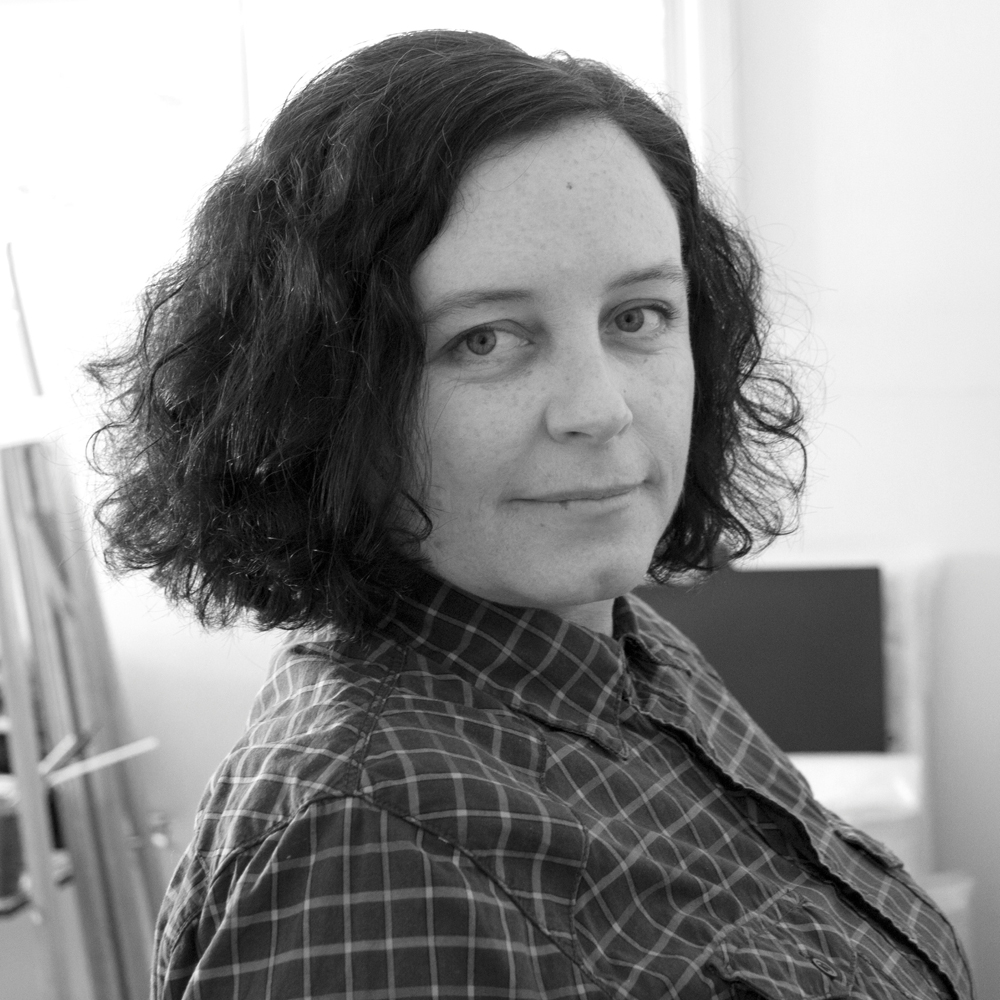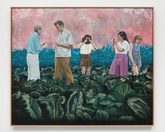Kylie Banyard
Bendigo, Victoria
2019
Displayed 2019 at Museum of Contemporary Art Australia

Kylie Banyard
Born 1974, Sydney. Lives and works Bendigo, Victoria
Kylie Banyard is a multidisciplinary artist whose work is grounded in painting and intersects with photography, video, sculpture and immersive architectural spaces. Through her practice, Banyard uncovers the political potential of the utopian imagination through an exploration of alternate models for living and learning. Her speculative images combine historical references with fantasy, drawing on ideas from the past and bringing them into the present, in a way that invites contemplation about what the future may hold.
Artist text
by Jacqueline Millner
As neoliberalism exposes its barren heart, we need all the more to seek out what is generative and expansive, to embrace ideas and practices that elicit joy, pleasures and connectedness. Not too long ago, in the backwaters of North Carolina, nestled in the Appalachian Mountains, an experiment took place that set out to reinvent how we might live, teach and create. At Black Mountain College (1933–56) imagination was seen as fundamental to all learning, and artistic making was ‘a model of integrating vision, materials, structure and imagery’. (1) With minimal financial resources, the college thrived instead on human capital, ‘paying for freedom with voluntary poverty’. It affirmed the ability to adapt, adjust, make something out of nothing, and fostered radical democracy through ‘permissive openness’ and an ethos of self-initiated, broad-ranging inquiry. Emphasising learning by doing, the college harnessed the pedagogical power of play and collaboration, integrating cultivation of the land and creativity, placing relationships at the centre of knowledge generation. Here is where artist–educator–mother Kylie Banyard finds inspiration, as she herself attempts to dream up new ways of living in a deeply damaged world.
Banyard’s is a critical engagement with this social and artistic history: she is well aware of the perils of romanticising a complex phenomenon and is driven to correct the official record, which severely underplayed the role of women in Black Mountain and relied instead on the male proper names to signal the college’s significance. Yet the artist is also loath to cede her utopian impulses, for they are a rich source of imaginings, generating the energy to fight another day.
In making the body of work Modes of Associated Living (2019), Banyard begins with archival research, collecting photos that capture the multiple facets of this alternative community in glorious black and white, with mid-century modernist panache: female artists and students in action, on the land or in the studio, at creative leisure or in animated conversation. Banyard then cross-fertilises this collection to construct fictional scenarios, at times inserting her own images, messing with the archive’s historical specificity and documentary register. Finally, she transforms these collages into paintings, scaling them up with relish and lavishing them with colour, the process itself a playful and affirming activity that channels the ethos of Black Mountain; longtime teacher Anni Albers once described her practice there as an ‘enjoyment of colours, form, surface contrasts and harmonies: a tactile sensuousness’. (2) Albers predominantly worked in textiles, a medium that hovers between functionality and formalism, which in later years would become associated with feminist attempts to confound the hierarchy between institutionally sanctioned art and domestic craft. By foregrounding female creativity and mixing her painting practice with appliqué and found fabric, Banyard’s project mobilises these discourses, reminding us of their enduring relevance.
Banyard’s work is part tribute to the trailblazing women of Black Mountain, part proposition for a values revolution. It repurposes Black Mountain’s progressive vision of art-driven sustainable living for contemporary times, and it does so by repurposing painting away from its self-reflexive discourse and towards imaging joyful alternatives to being in the world.
Notes
(1) Unless otherwise specified, all quotes are from the personal accounts of Black Mountain College women published in Mervin Lane (ed.), Black Mountain College: Sprouted Seeds – An Anthology of Personal Accounts, University of Tennessee Press, Knoxville, 1990, pp.168–253.
(2) Anni Albers, ‘Handweaving today: textile work at Black Mountain College’ (1941) cited in Alexxa Gotthardt, ‘8 pioneering women artists of Black Mountain College’, Artsy, 12 March 2018, https://www.artsy.net/article/artsy-editorial-8-pioneering-women-artists-black-mountain-college.
